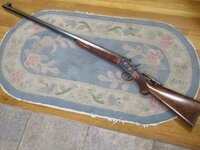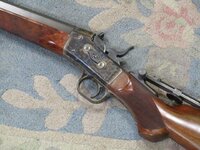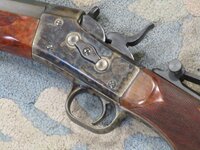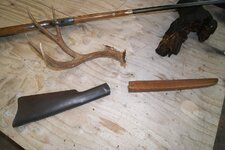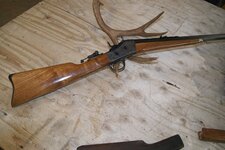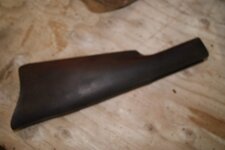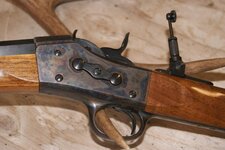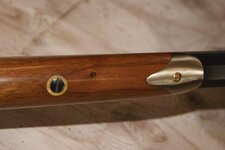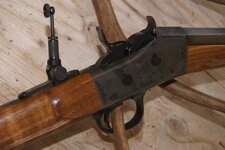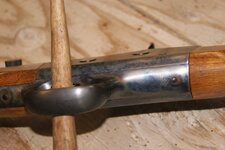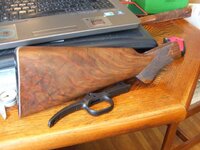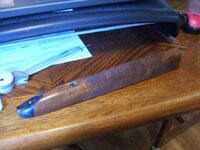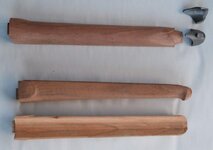Member 38805
- Messages
- 697
- Reactions
- 1,570
This has been a long haul. Mainly because of stumbling blocks along the way with a cracked receiver, and bad parts. But after almost two years of fooling around, I just finished assembling my Remington Rolling Block Sporting Rifle!
It is made up of various genuine Remington parts from over 100 years span. The action is a 1870's military receiver that I thinned the top tang on, and D&T for a long range tang sight. The sight is from the run of Rem. Rollers built in the late 1990's. The buttstock and forearm are also from Rem. Custom Shop, and the same late 1990's run. I fitted one of Rem.'s pistol grip lower tangs to it also, and then fitted the late model Rem. wood to the action.
The barrel is a Green Mountain .40 caliber with 1:16" twist rate, and is a heavy No. 3.5 weight cut at 34" and full octagon. It's fitted with a Baldwin globe front, with spirit level. The barrel is chambered in .40-50 Sharps Straight. With a very gentle lead into the rifling, for use with heavier bullets if I want. My normal bullet for this caliber is the RCBS CSA cast lead 350 gr. bullet.
I built this along the dimensions and characteristics of the original Remington Creedmoor Sporting Rifles. Except for the caliber. I really like the little .40-50SS caliber, as it lends itself to very light recoil, and yet also shoots smokeless powders quite well if I want to push the velocities slightly higher for long range work.






It is made up of various genuine Remington parts from over 100 years span. The action is a 1870's military receiver that I thinned the top tang on, and D&T for a long range tang sight. The sight is from the run of Rem. Rollers built in the late 1990's. The buttstock and forearm are also from Rem. Custom Shop, and the same late 1990's run. I fitted one of Rem.'s pistol grip lower tangs to it also, and then fitted the late model Rem. wood to the action.
The barrel is a Green Mountain .40 caliber with 1:16" twist rate, and is a heavy No. 3.5 weight cut at 34" and full octagon. It's fitted with a Baldwin globe front, with spirit level. The barrel is chambered in .40-50 Sharps Straight. With a very gentle lead into the rifling, for use with heavier bullets if I want. My normal bullet for this caliber is the RCBS CSA cast lead 350 gr. bullet.
I built this along the dimensions and characteristics of the original Remington Creedmoor Sporting Rifles. Except for the caliber. I really like the little .40-50SS caliber, as it lends itself to very light recoil, and yet also shoots smokeless powders quite well if I want to push the velocities slightly higher for long range work.
